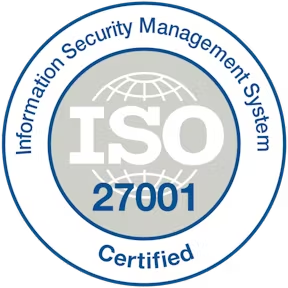Out-tasking is gaining attention in the eLearning field as organizations look for new ways to manage specialized work. Unlike outsourcing entire projects, out-tasking focuses on delegating specific tasks to external experts while keeping overall control in-house. This approach allows training providers to move faster, access skills they may not have internally, and adjust resources without long-term commitments.
For learning teams facing pressure to deliver more engaging content, integrate new technologies, or scale with fluctuating demand, out-tasking provides a practical option. It creates a balance between relying on internal staff and bringing in external talent, making it possible to stay efficient while raising the quality of training.
This article explores the main advantages of out-tasking in eLearning, the challenges to keep in mind, and practical ways to implement it effectively. A case study is also included to show how a provider successfully used out-tasking to expand its course offerings.
Benefits of Out-tasking
Out-tasking gives eLearning providers the flexibility to improve operations without committing to large structural changes. The value lies not only in reducing costs but also in how it reshapes the way organizations use their resources.
Focused expertise
Bringing in external specialists for targeted tasks allows internal teams to concentrate on their core strengths. For example, a provider might rely on an outside partner for complex data visualization while its own staff focuses on instructional design. This targeted use of talent ensures that the most qualified people handle the most demanding tasks.
Faster response to demand
Training needs often shift quickly, especially when regulations change or a client requests a new course format. Out-tasking makes it possible to respond without delays, since external providers can be brought in as needed. This prevents bottlenecks and helps organizations deliver on time.
Risk management
Relying solely on internal capacity can expose an organization to risks if key staff leave or priorities shift. Out-tasking distributes that risk by ensuring that knowledge and production capacity are not concentrated in a single team. Clear agreements with external partners also provide a safeguard for continuity.
Innovation opportunities
External contributors often bring new methods and technologies that may not be present in-house. By collaborating on specific projects, eLearning providers can test new approaches with limited investment. If the results are positive, these innovations can later be expanded across the organization.
Operational flexibility
One of the most practical benefits is the ability to scale activities up or down without long-term hiring commitments. This flexibility allows organizations to handle peak periods more smoothly and reduce capacity when demand slows, keeping resources aligned with actual needs.
Examples of Tasks You Can Out-task in eLearning
Out-tasking is most effective when applied to specific, high-impact activities rather than entire projects. The table below highlights common tasks that eLearning providers often delegate, the type of partner usually involved, and the outcomes they can expect.
How to Implement Out-Tasking Effectively?
Out-tasking can deliver strong results when it is approached with planning and structure. Rather than treating it as a quick fix, organizations should view it as part of a broader strategy for managing resources and partnerships.
Identify the right tasks to delegate
The first step is to determine which activities are best handled externally. These are often tasks that require deep expertise, occur irregularly, or place too much strain on internal staff. Clarity at this stage avoids confusion later and helps set expectations with the external partner.
Set clear objectives and deliverables
Once a task is chosen, define what success looks like. Timelines, quality standards, and measurable outcomes should be outlined in advance. This creates a shared understanding and reduces the risk of rework.
Choose partners carefully
Not every provider will be a good fit. Beyond technical skill, consider their track record, communication style, and ability to integrate with your way of working. Building trust is essential if the relationship is to last.
Integrate with existing processes
Out-tasked work should not feel disconnected from ongoing operations. Simple tools such as shared project boards, file management systems, and regular updates help ensure that external contributions fit smoothly into the broader workflow.
Monitor and review regularly
Performance checks keep the partnership on track. Instead of waiting until a project is finished, establish regular checkpoints to measure progress, share feedback, and adjust if needed. This makes the process more reliable and easier to refine over time.
Document and retain knowledge
When work is handled outside the organization, it is important to capture the knowledge that comes with it. Storing documentation, design choices, and process notes ensures that critical information is not lost and can be used again in the future.
Conclusion
Out-tasking represents a strategic tool that, when implemented thoughtfully, enables eLearning providers to navigate and thrive in an increasingly competitive and technologically advanced educational landscape. It offers a practical solution to resource management, allowing organizations to adapt and innovate without the burdens of heavy investment in highly specialized areas.
As demonstrated through practical application in the industry, out-tasking is not merely a theoretical concept but a viable, actionable strategy that can lead to tangible improvements in service delivery and customer satisfaction. This approach is integral for enhancing educational products and services while staying agile in a dynamic market.
%201.svg)

.png)
%201.svg)

